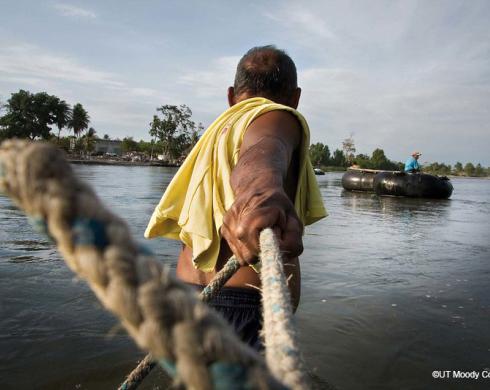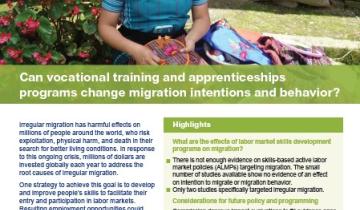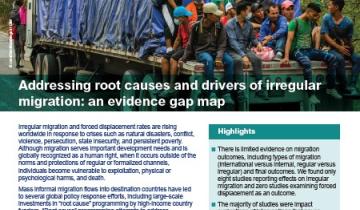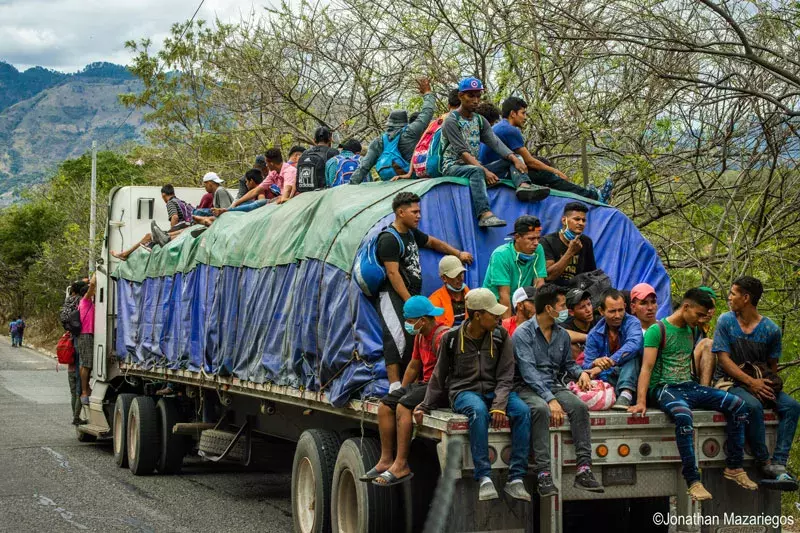Synthesizing evidence to address root causes and drivers of irregular migration
Irregular migration arises from a mix of factors—economic opportunities, shocks, legal pathways, and migration management. While the Universal Declaration of Human Rights recognizes freedom of movement, the challenge is ensuring migration occurs safely and sustainably. 3ie’s research synthesizes evidence on what works to address the root causes of irregular migration. After the first phase in 2023, funded by IOM and USAID, 3ie is now supported by the Policy and Operations Evaluation Department (IOB) of the Dutch Ministry of Foreign Affairs for their ongoing evaluation of migration cooperation and partnerships.

Overview
3ie’s research on irregular migration builds on earlier work in 2023 funded by IOM-Guatemala and USAID, which was aimed to provide evidence to help Guatemalans build prosperous, secure, and dignified lives in their communities. The current phase, funded by the IOB of the Dutch Ministry of Foreign Affairs, updates and expands the EGM and produces additional evidence syntheses, including evidence summaries and a synthesis report, which aim to support IOB’s ongoing evaluation of migration cooperation and partnerships.
Mapping the evidence
3ie developed and published an EGM and a targeted systematic review (SR) in 2023. Building on this work, the current phase, funded by the IOB of the Dutch Ministry of Foreign Affairs, supports 3ie in updating and expanding the EGM and producing additional evidence syntheses.
Evidence gap map and report
This EGM includes impact evaluations and systematic reviews on the effects of interventions implemented in low- and middle-income countries. The map focuses on interventions addressing key root causes and other drivers of irregular migration, including:
- Limited economic and work opportunities
- Inability of households and communities to adapt to, mitigate, or recover from covariate shocks or stressors due to diminished resilience
- Violence or crime creating insecure and unsafe communities
- Drivers that increase the risk of migration through irregular pathways
For the map’s update, we also focus on external migration management interventions, including migration partnerships, migration deals, externalization, deterrence, and remote control.
The map will now include quantitative studies that assess migration behavior and intermediate outcomes, such as aspirations, intentions, and perceptions. For the external management migration interventions, we also include qualitative impact evaluations.
The updated map aims to address the following research question: What is the scope of the latest available evidence and confidence rating of systematic reviews on the effectiveness of interventions aimed at reducing irregular migration, and where are the key evidence gaps that warrant further research?
To update and expand the 2023 migration EGM, 3ie’s new inception report sets out the approach and methods.
The previous map, along with the accompanying report and brief published in 2023, provides a valuable starting point for exploring existing literature, identifying evidence gaps, which can be useful for policymakers, researchers, and practitioners in relevant sectors.
Evidence Gap Map | Evidence Gap Map Report | Evidence Gap Map Brief
Synthesis evidence
3ie’s new inception report outlines methods for producing concise evidence summaries and a synthesis report on intervention categories from the updated EGM with sufficient relevant evidence.
The mixed-methods systematic review (SR) we produced in 2023 is based on one of the largest clusters of evidence identified in the EGM—skills-based active labor market policy interventions (i.e., vocational training and apprenticeship programs). The synthesis pooled the results of 10 impact evaluations (all randomized control trials) and ran random effects meta-analyses. We also supplemented quantitative findings by searching for qualitative research on the same programs. This paper was commissioned by the International Organization for Migration (IOM) Guatemala through USAID’s project, Addressing the Root Causes of Irregular Migration in Guatemala.









